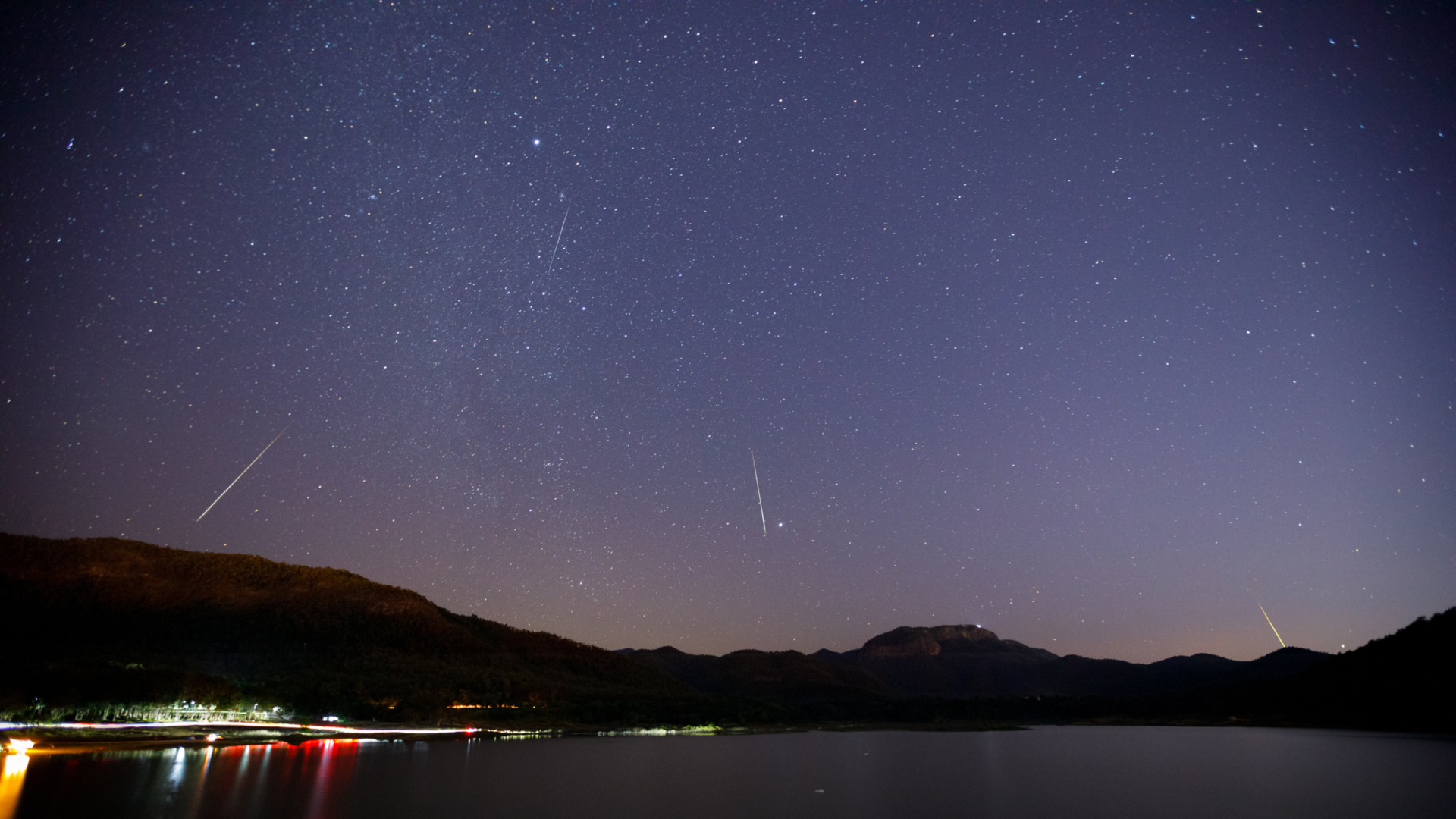Sun Was at Work Long Before First Sunrise
Before the Sun was the Sun, it glowed brightly and began cooking up the soup of life, according to a new study.
Stars like the Sun form when giant clouds of gas and dust condense into a ball, igniting thermonuclear fusion, which is the conversion of primarily hydrogen and helium into heavier elements. Theory holds that the cloud ought to light up as the density increases during its collapse, which can take hundreds of millions of years.
That's exactly what scientists found by studying chemical signatures in ancient rocks that have hit Earth as meteorites.
Theorists figure a pre-solar nebula began to collapse about 5 billion years ago, possibly triggered by a shock wave from a nearby exploding star. (The Sun likely formed in a crowded environment before wandering to its present lonely location, many astronomers believe.)
As the cloud collapsed under its own weight and rotated faster, some material was spun into a doughnut-shaped disk. Clumps of dust became rocks. Some were destined to be planets. Others became asteroids, comets and smaller meteoroids.
Astronomers have long wondered: Was the Sun on or off prior to becoming a true star? Earth rocks have provided no clues. "There is nothing in the geological record before 4.55 billion years ago that could answer this," says Mark Thiemens of the University of California, San Diego.
So Thiemens and his colleagues examined a group of space rocks that have been collected on Earth and are considered pristine vaults of solar system information because they formed before the planets did.
Breaking space news, the latest updates on rocket launches, skywatching events and more!
Here's why the meteorites are so valuable: All the rock that made Earth has been heated and reprocessed since the planet's formation. Like a computer meltdown, the original natural data in the rock is lost. The meteorites in the study -- think of them as tiny primordial hard drives -- spent billions of years in the outskirts of the solar system. Only relatively recently were they gravitationally kicked into the inner solar system, where they landed on Earth.
In those rocks the researchers found an excess of a particular flavor of sulfur, called an isotope, that shows photochemical reactions were underway more than 4.5 billion years ago.
"This measurement tells us for the first time that the Sun was on, that there was enough ultraviolet light to do photochemistry," Thiemens said. "Knowing that this was the case is a huge help in understanding the processes that formed compounds in the early solar system."
Thiemens and his colleagues say their finding provides the first conclusive evidence that the protosun "played a major role in chemically shaping the solar system by emitting enough ultraviolet energy to catalyze the formation of organic compounds, water and other compounds necessary for the evolution of life on Earth."
The results are detailed in the Aug. 12 issue of the journal Science.
- Live Sun Cam
- Mysteries of the Sun
- Origins Revealed: Sun and Earth Born amid Chaos
- Sun's Pulse Found, and It's Surprisingly Quick
- How a Star is Born

Rob has been producing internet content since the mid-1990s. He was a writer, editor and Director of Site Operations at Space.com starting in 1999. He served as Managing Editor of LiveScience since its launch in 2004. He then oversaw news operations for the Space.com's then-parent company TechMediaNetwork's growing suite of technology, science and business news sites. Prior to joining the company, Rob was an editor at The Star-Ledger in New Jersey. He has a journalism degree from Humboldt State University in California, is an author and also writes for Medium.
